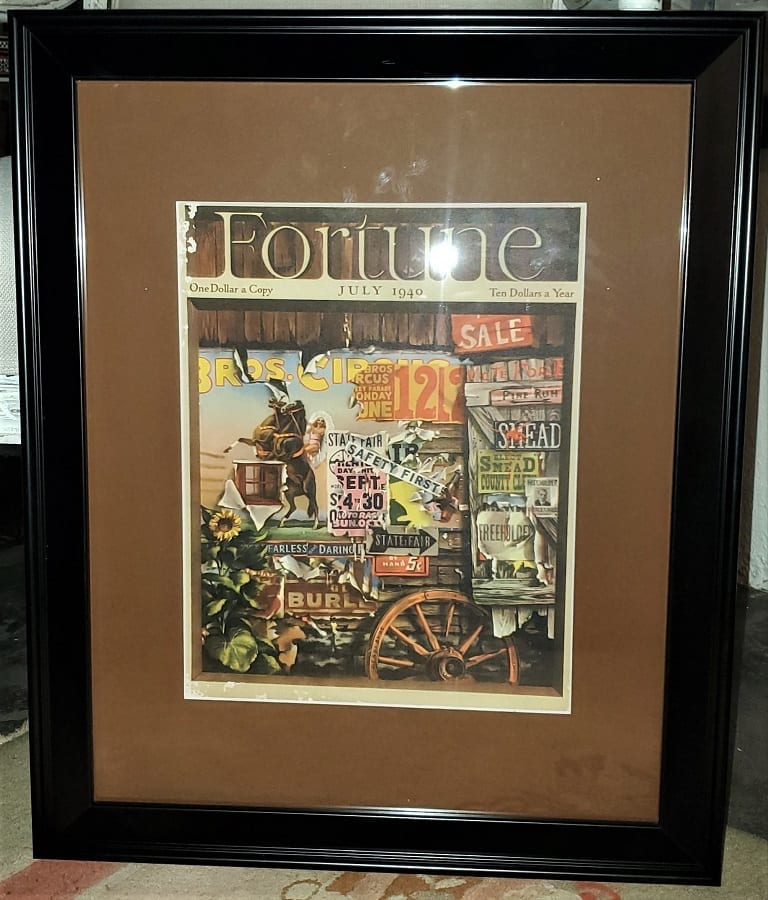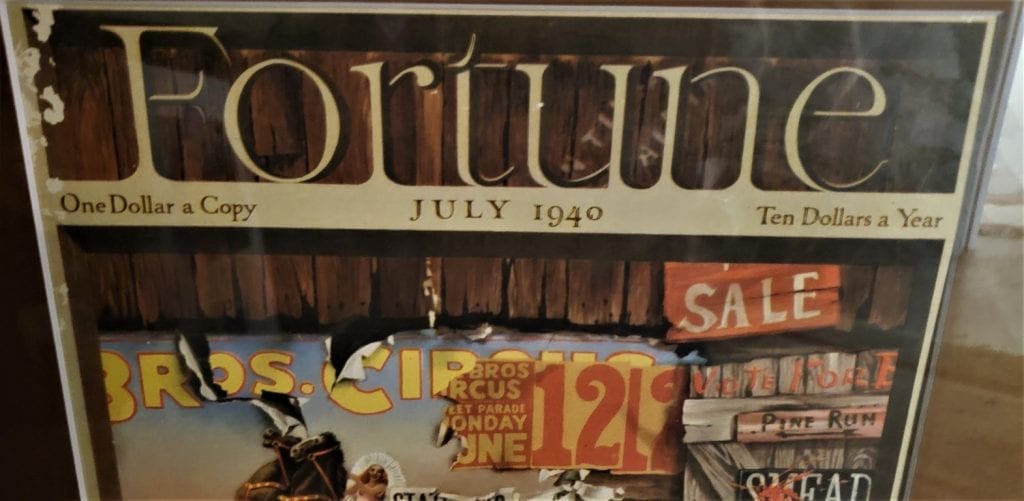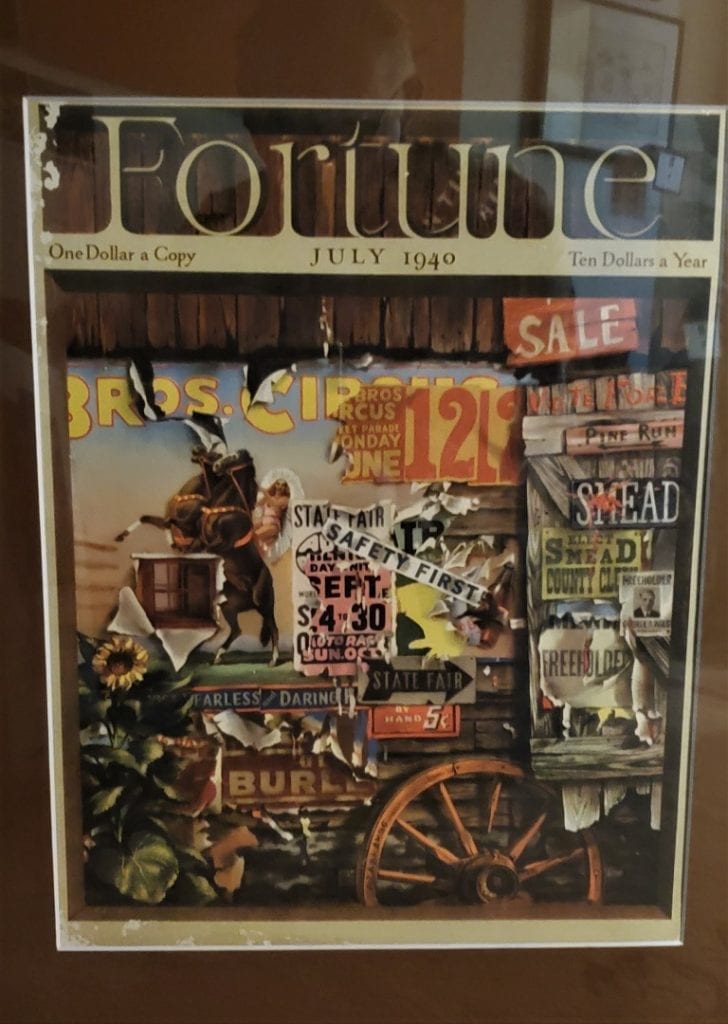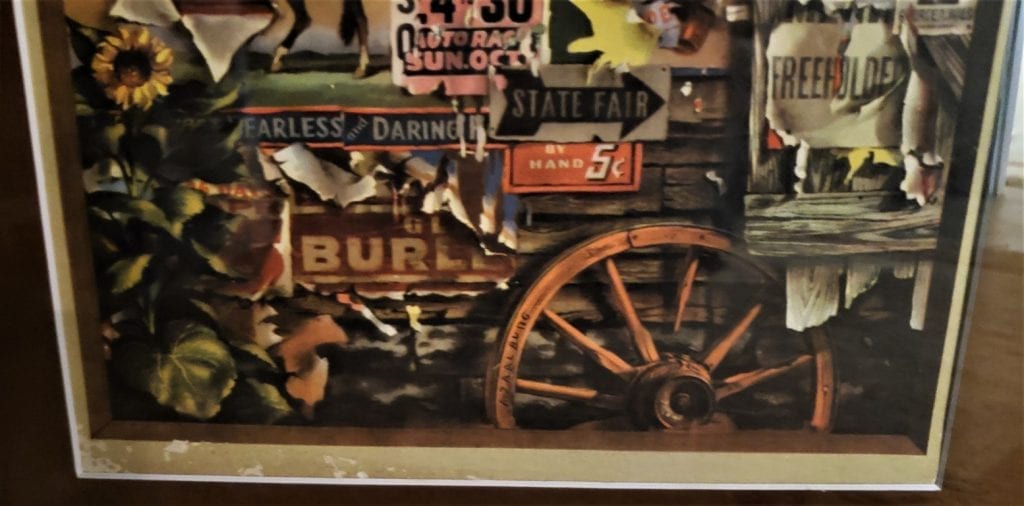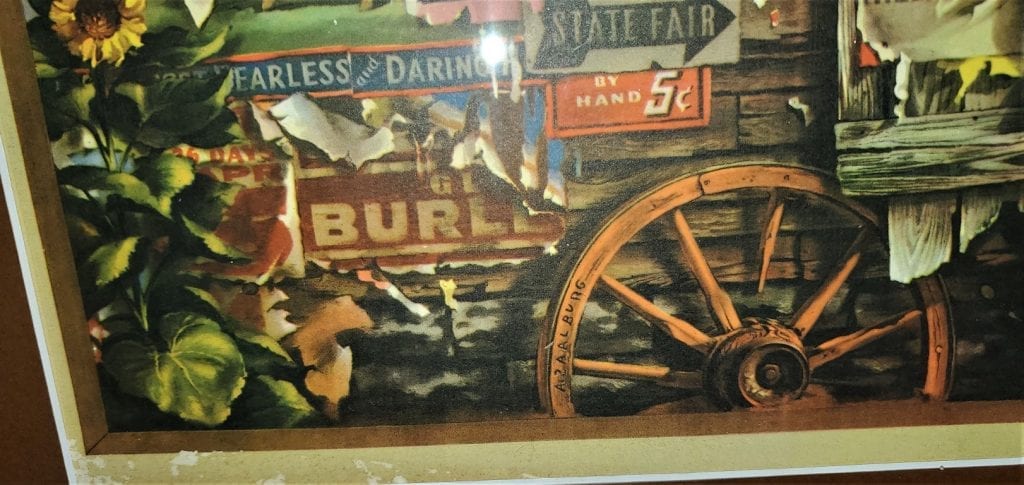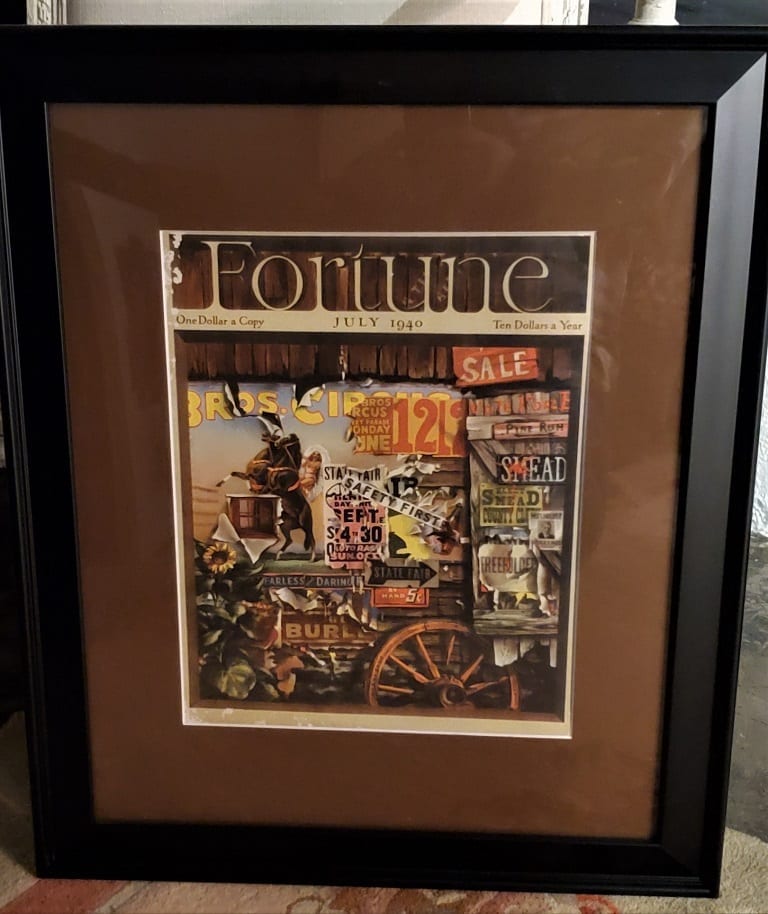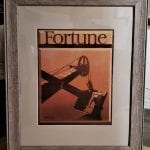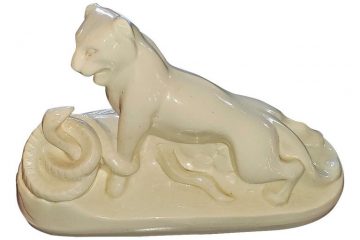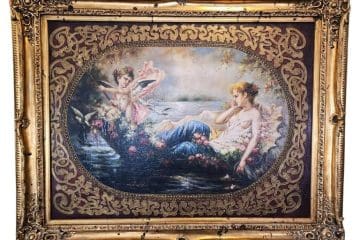Fortune Magazine Cover – July 1940
PRESENTING a FABULOUS Original WWII Era Fortune Magazine Cover – July 1940.
The cover of Fortune Magazine for July 1940, framed and matted.
This is an ORIGINAL COVER, not a re-print or copy. It is the cover of an actual 1940 Fortune Magazine and we can 100% certify it’s authenticity. We have attached a COA on the back of the frame.
The frame is modern. It is in a black poster frame with acid free brown beveled matting. Perspex front. The frame and matting are perfect for the style of the era.
The cover print is a depiction of a circus advertisement in CLASSIC PERIOD STYLE.!
The cover is in good condition as can be seen from the photos. Some minor loss to the top left and bottom left margins.
This is one of the more iconic covers of Fortune.
Pained by ‘A. Saalburg’ as noted and signed on the wagon wheel.
Allen Russell Saalburg (1899–1987) was an American painter, illustrator, and screen printer born in Rochelle, Illinois. His father was the cartoonist Charles W. Saalburg. He studied at the Art Students League of New York before working in advertising and magazine illustration in the 1920s. A business trip he took to Paris in 1929 with his wife, sketching runway fashion for department stores, led to his first gallery show, at the esteemed Bernheim-Jeune, with his second in New York at a gallery of Louis Bouché. During the 1930s he had regular shows of screenprints on glass (his specialty) and wall panels, and directed a mural division of the Works Progress Administration (WPA), in New York City, overseeing murals in the Central Park Zoo and other New York locations. His murals in the Arsenal of Central Park survive today.
In 1942, the United States Flag Association awarded him the Cross of Honor and Patriotic Service Cross for his painting Flag Over Mt. Vernon. By the 1940s Saalburg had established his own press. He was married to fashion designer Muriel King, and later to Mary Faulconer, a painter. In 1947 after divorce and the loss of his child by his first wife, he moved to Bucks County, Pennsylvania, re-establishing his printing operation as the Canal Press, for the Delaware Canal nearby.
He died in Flemington, New Jersey, at the age of 88. His works can be found in the institutions such as the Whitney Museum of American Art, the Philadelphia Museum of Art, and the Metropolitan Museum of Art,
Link: https://en.wikipedia.org/wiki/Allen_Saalburg
Fortune was founded by The Atlantic Monthly Company co-founder Henry Luce in 1929 as “the Ideal Super-Class Magazine”, a “distinguished and de luxe” publication “vividly portraying, interpreting and recording the Industrial Civilization”. Briton Hadden, Luce’s business partner, was not enthusiastic about the idea – which Luce originally thought to title Power – but Luce went forward with it after Hadden’s sudden death on February 27, 1929.
In late October 1929, the Wall Street Crash of 1929 occurred, marking the onset of the Great Depression. In a memo to the Time Inc. board in November 1929, Luce wrote: “We will not be over-optimistic. We will recognize that this business slump may last as long as an entire year.” The publication made its official debut in February 1930. Its editor was Luce, managing editor Parker Lloyd-Smith, and art director Thomas Maitland Cleland. Single copies of the first issue cost US$1 ($15.3 in 2019). An urban legend says that Cleland mocked up the cover of the first issue with the $1 price because no one had yet decided how much to charge; the magazine was printed before anyone realized it, and when people saw it for sale, they thought that the magazine must really have worthwhile content. In fact, there were 30,000 subscribers who had already signed up to receive that initial 184-page issue. By 1937, the number of subscribers had grown to 460,000, and the magazine had turned half million dollars in annual profit.
At a time when business publications were little more than numbers and statistics printed in black and white, Fortune was an oversized 11″×14″, using creamy heavy paper, and art on a cover printed by a special process. Fortune was also noted for its photography, featuring the work of Margaret Bourke-White, Ansel Adams, and others. Walker Evans served as its photography editor from 1945 to 1965.
During the Great Depression, the magazine developed a reputation for its social conscience, for Walker Evans and Margaret Bourke-White‘s color photographs, and for a team of writers including James Agee, Archibald MacLeish, John Kenneth Galbraith, and Alfred Kazin, hired specifically for their writing abilities. The magazine became an important leg of Luce’s media empire; after the successful launch of Time in 1923 and Fortune in 1930, Luce went on to launch Life in 1936 and Sports Illustrated in 1954.
From its launch in 1930 to 1978, Fortune was published monthly. In January 1978, it began publishing biweekly. In October 2009, citing declining advertising revenue and circulation, Fortune began publishing every three weeks. As of 2018, Fortune is published 14 times a year.
Link: https://en.wikipedia.org/wiki/Fortune_(magazine)
Art Deco, sometimes referred to as Deco, is a style of visual arts, architecture and design that first appeared in France just before World War I. Art Deco influenced the design of buildings, furniture, jewelry, fashion, cars, movie theatres, trains, ocean liners, and everyday objects such as radios and vacuum cleaners. It took its name, short for Arts Décoratifs, from the Exposition internationale des arts décoratifs et industriels modernes (International Exhibition of Modern Decorative and Industrial Arts) held in Paris in 1925. It combined modern styles with fine craftsmanship and rich materials. During its heyday, Art Deco represented luxury, glamour, exuberance, and faith in social and technological progress.
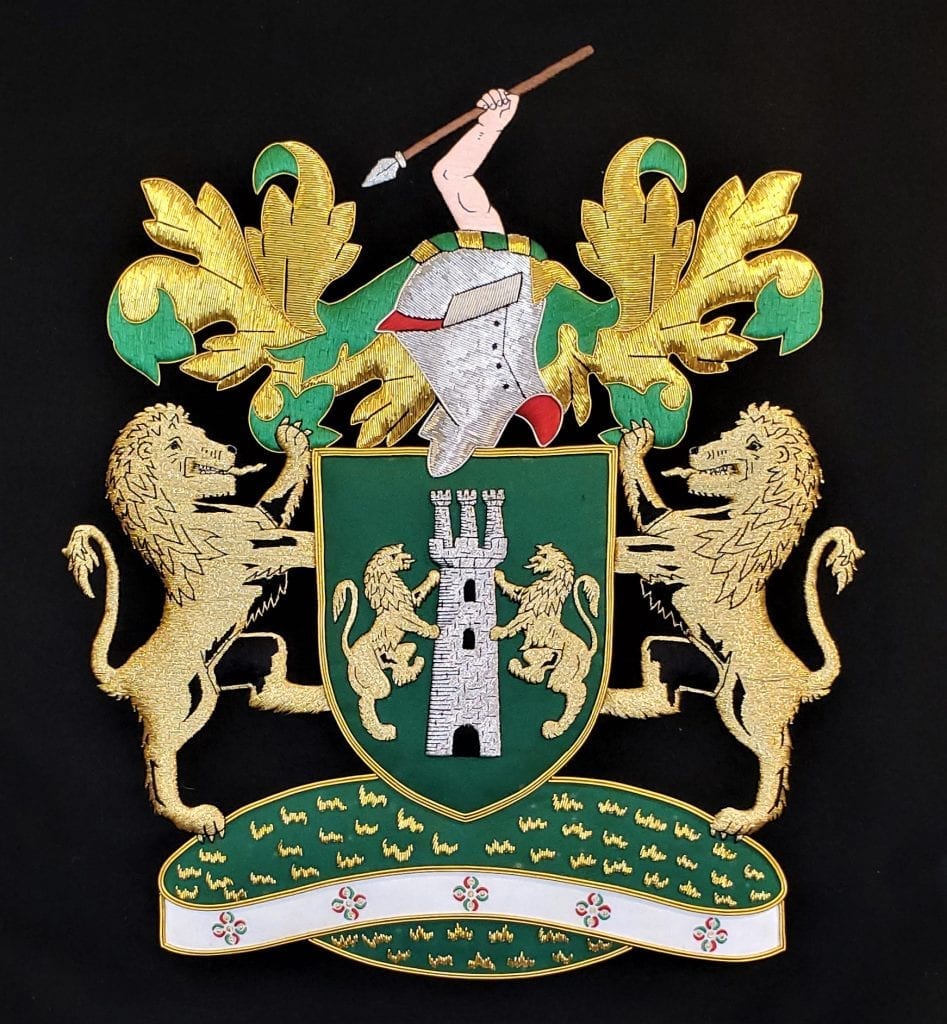

Fortune Magazine Cover – July 1940.
Provenance: From a Fine Dallas Estate.
Condition: Fair. Some minor losses.
Dimensions: In Frame: 23.75 inches Tall, 19.75 inches Wide and 0.75 inch Deep
SALE PRICE NOW: $325
